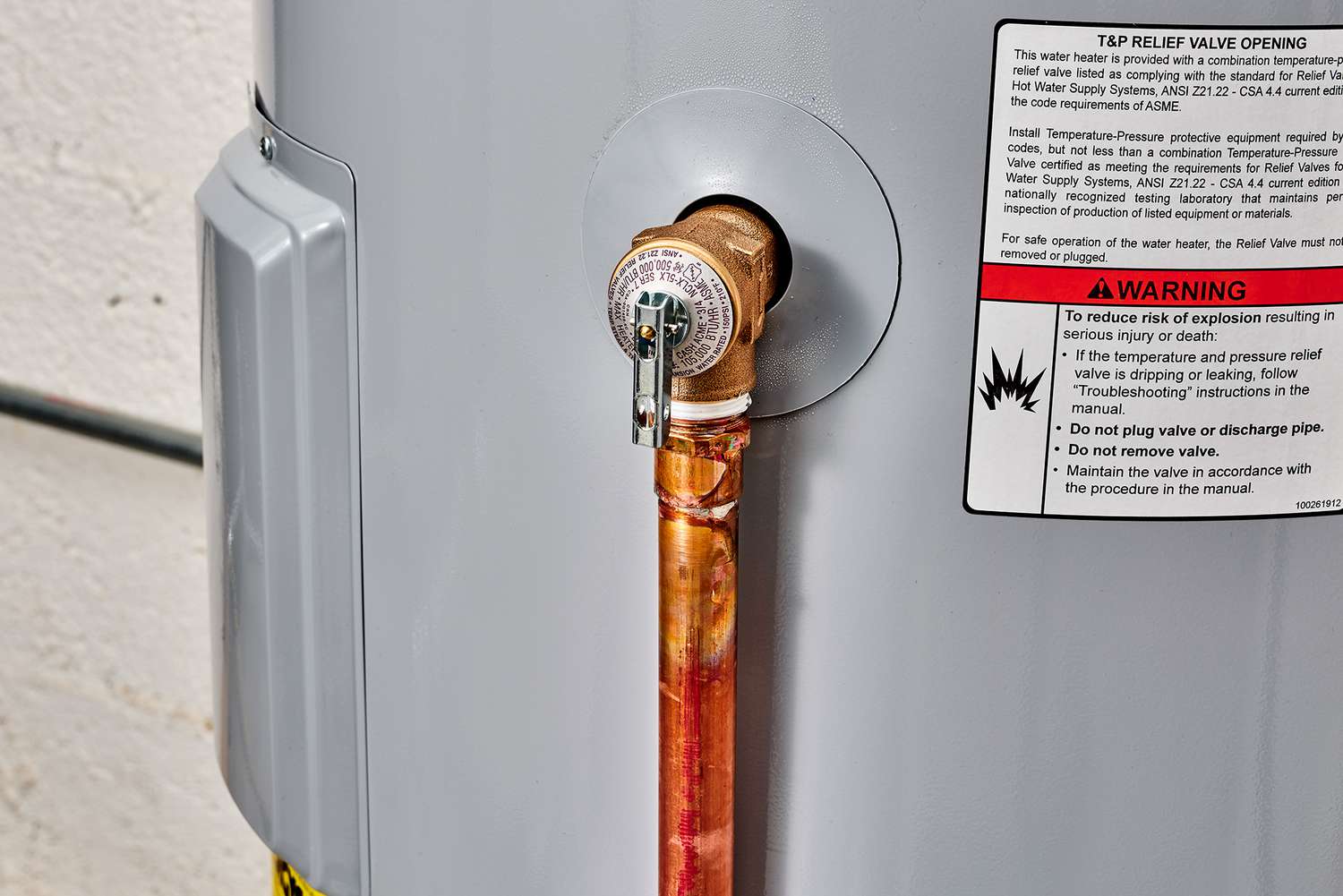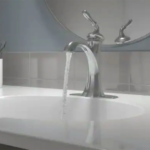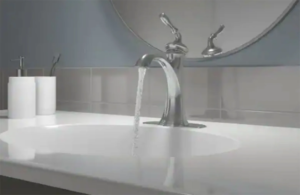
Are disruptive noises from your water heater driving you crazy? The master plumbers at Masterflo Plumbing understand the frustration and know how to fix it. Loose pipes might be causing rattling or banging sounds, while high water pressure can lead to vibrating pipes. Sediment buildup in the tank can also create noise, which draining and flushing can resolve. Replacing the T&P valve and installing a water hammer arrestor are effective solutions for noisy vibrations. Addressing these issues will ensure a quieter water heater and a more peaceful home environment.
TLDR:
- Inspect and secure pipes to eliminate rattling or banging sounds.
- Adjust water pressure within the ideal range of 40 to 60 psi.
- Drain and flush the tank to reduce sediment buildup.
- Replace the T&P valve for safety and noise reduction.
- Install water hammer arrestors to prevent noisy vibrations.
Inspect for Loose Pipes
If you hear unusual noises coming from your water heater, start by inspecting for loose pipes. Loose pipes can cause rattling or banging sounds when hot water flows through them. Begin by visually examining the pipes near your water heater. Look for any pipes that appear to be loose, improperly secured, or vibrating during operation. Use a flashlight to get a better view of the pipes in dimly lit areas.
Once you identify any loose pipes, try tightening the pipe clamps or brackets that are holding them in place. Make sure the pipes are securely fastened to the walls or ceiling to prevent them from moving and causing noise. If you notice any damaged pipes, consider replacing them to eliminate the source of the noise. After securing or replacing the pipes, turn on the hot water to see if the unusual noises have stopped. If the problem persists, move on to the next steps in troubleshooting your noisy water heater.
Adjust Water Pressure
To address noisy water heater issues, adjusting the water pressure can help alleviate any banging or rumbling sounds that may be present during operation. High water pressure can cause pipes to vibrate or bang against walls, leading to noisy disturbances. Begin by locating the main water supply valve in your home. This valve is usually near the water meter or where the main water line enters your house. Using a pressure gauge, check the current water pressure. The ideal water pressure for most homes is between 40 to 60 pounds per square inch (psi). If your water pressure exceeds this range, consider adjusting it to a lower level. To do this, you can adjust the pressure regulator on the main water supply line. By reducing the water pressure to an appropriate level, you can help minimize the noise produced by your water heater, creating a quieter and more peaceful environment in your home.
Drain and Flush Tank
Consider draining and flushing the tank to help reduce sediment buildup and improve the efficiency of your water heater. Over time, sediment can accumulate at the bottom of the tank, causing noise and reducing the heater’s effectiveness. To do this, follow these steps:
First, turn off the water heater and let it cool down. Locate the drain valve at the bottom of the tank and connect a garden hose to it. Place the other end of the hose in a drain or outside where the hot water won’t cause damage. Open the pressure relief valve on the top of the tank to allow air into the tank for a smoother flow of water. Then, open the drain valve and let the water flow out until it runs clear.
After draining, close the drain valve and remove the hose. Turn on the water supply to flush out any remaining sediment. Once the water runs clear from the pressure relief valve, close it, and turn the water heater back on. This simple maintenance task can help keep your water heater running smoothly and quietly.
Replace T&P Valve
When maintaining your water heater, replacing the T&P valve is another essential step to guarantee its proper functioning and safety. The temperature and pressure relief valve (T&P valve) is an important safety feature that releases excess pressure to prevent the tank from exploding. Over time, these valves can become faulty or clogged, posing a risk to your water heater and your home. Here are four steps to help you replace the T&P valve effectively:
- Turn off the power: Before starting any work on your water heater, make sure to turn off the power supply to avoid any electrical accidents.
- Drain the tank: Connect a hose to the drain valve and empty the tank to relieve pressure before removing the old T&P valve.
- Remove the old valve: Unscrew the old T&P valve from the tank using a wrench, making sure to keep the area clear of water.
- Install the new valve: Wrap the threads of the new valve with plumber’s tape and screw it into place securely, ensuring it is properly seated and sealed.
Install Water Hammer Arrestor
Installing a water hammer arrestor can help alleviate the noisy vibrations in your plumbing system caused by sudden water pressure changes. Water hammer occurs when the flow of water is suddenly shut off, creating a shockwave that reverberates through the pipes. This can lead to loud banging or thumping noises that can be quite disruptive. By installing a water hammer arrestor, you can absorb the pressure surge, preventing it from causing the pipes to shake and produce noise.
To install a water hammer arrestor, start by turning off the main water supply to your home. Next, locate the area where the water hammer is most pronounced, typically near valves, faucets, or appliances. Then, disconnect the water supply lines and install the water hammer arrestor in-line with the pipes. Make sure to follow the manufacturer’s instructions for proper installation.
Once the water hammer arrestor is in place, turn the water supply back on and test the system. You should notice a significant reduction in the noise produced by water hammer, creating a quieter and more peaceful plumbing system in your home.
Insulate Pipes
To further reduce noise in your plumbing system and enhance its efficiency, insulate pipes to dampen vibrations and prevent heat loss. Insulating pipes is a simple yet effective way to silence a noisy water heater. Here’s how you can do it:
- Materials: Gather pipe insulation sleeves, foam pipe insulation, or fiberglass pipe wrap to cover the pipes adequately.
- Measure and Cut: Measure the length of the pipes and cut the insulation material to fit each section precisely.
- Wrap Pipes: Wrap the insulation around the pipes securely, ensuring there are no gaps or loose ends.
- Secure in Place: Use duct tape or zip ties to secure the insulation in place and prevent it from shifting or coming loose.
Clean Heating Elements
To guarantee a quieter water heater and improved performance, make sure you regularly clean the heating elements. Over time, mineral deposits, sediment, and other impurities can accumulate on the heating elements of your water heater. These deposits can cause the heating elements to operate less effectively, leading to increased noise and potentially reducing the lifespan of your water heater.
Cleaning the heating elements is a relatively simple process that can be done without professional help. Start by turning off the power to the water heater. Then, drain some water from the tank to access the heating elements. Use a soft brush or cloth to gently scrub away any buildup on the elements. Be cautious not to damage the heating elements during cleaning.
Regularly cleaning the heating elements can help prevent noise issues and ensure that your water heater operates at its best. By taking this simple maintenance step, you can extend the life of your water heater and enjoy a quieter, more efficient system.
Schedule Professional Maintenance
For professional maintenance that goes beyond cleaning the heating elements, consider scheduling routine servicing for your water heater. Regular maintenance by a professional can help address underlying issues and guarantee your water heater operates quietly and efficiently. Here are four key benefits of scheduling professional maintenance:
- Thorough inspection: A professional technician will conduct a detailed examination of your water heater, checking for any signs of wear and tear that could lead to noise or malfunctions.
- Cleaning and flushing: Professional maintenance often includes clearing out sediment buildup and flushing the tank to improve efficiency and reduce noise caused by debris.
- Adjustments and repairs: A technician can make necessary changes to components like the pressure relief valve or thermostat, as well as handle any repairs needed to keep your water heater running quietly.
- Longevity and efficiency: Regular professional maintenance can extend the lifespan of your water heater and ensure it operates at peak efficiency, reducing noise and energy costs in the long run.
Need Professional Help? Contact Masterflo Plumbing Today!
If your water heater is making noise, don’t wait—Masterflo Plumbing is here to help. Our experienced team can diagnose and fix any water heater issues, ensuring your home stays comfortable and quiet. Serving Canton, GA, and surrounding areas, we provide expert plumbing services you can rely on. Contact us today for prompt and reliable solutions!



No comment yet, add your voice below!